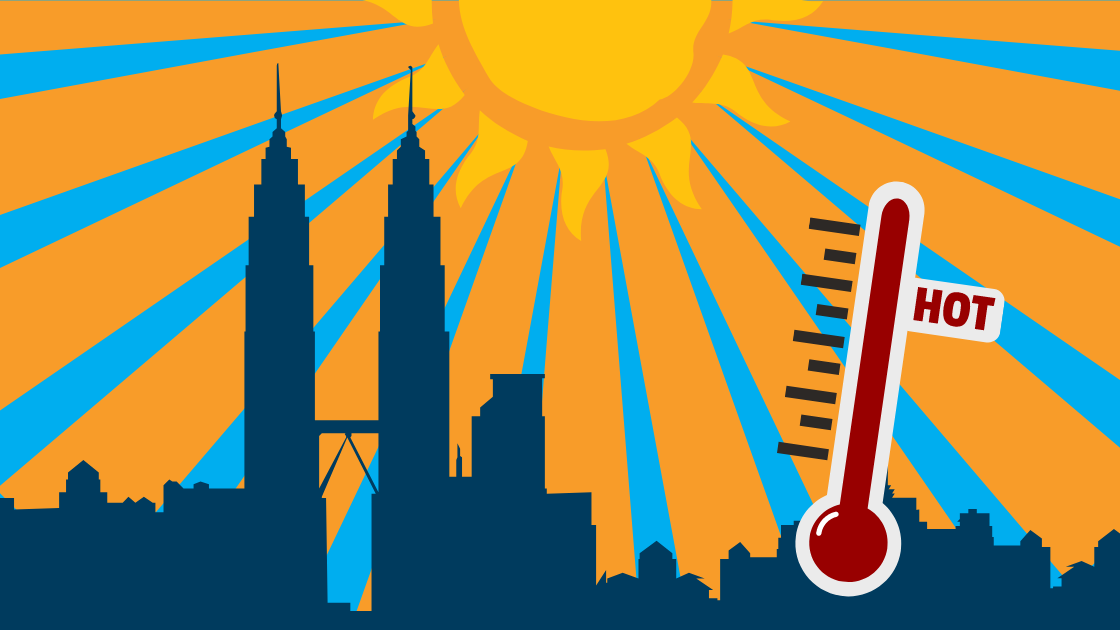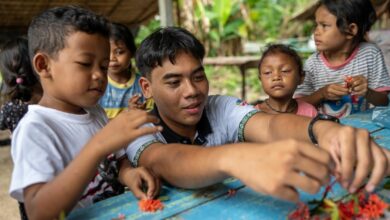In April, the Malaysian Meteorological Department (MetMalaysia) warned about heatwaves in Malaysia hitting seven areas with temperatures of 37-40°C for three straight days. Meanwhile, other areas saw temperatures between 35-37°C.
According to the World Bank Group and Asian Development Bank’s Climate Risk Country Profile: Malaysia (2021), our average temperatures could rise by 3.11°C by the 2090s. Over the last two decades, our cities have already heated up to 6.7°C.
Clearly, Malaysia is getting hotter each year!
What is a heatwave and what causes them?
A heatwave is a period of unusually hot weather lasting two or more days, with temperatures breaking the historical averages for the area.
Global warming is a major cause of these increasingly severe heatwaves in Malaysia. As climate change skews our weather patterns, heatwaves are becoming more frequent and intense. With the Earth’s average temperature rising, heatwaves in Malaysia will only get worse. In fact, by 2050, nearly 2.2 billion children worldwide could be exposed to these extreme conditions. Adding to the problem, deforestation is shrinking forest cover, which used to offer a natural cooling effect.
Heatwaves in Malaysia are also caused by urbanization, climate change and the El Niño phenomenon. El Nino occurs when warm water builds up along the equator in the eastern Pacific, sending extra heat into the atmosphere, and sparking unusually hot and stormy weather. This year, Malaysia’s hot and dry season kicked off earlier than the past two years because of the ongoing El Nino.
Are heatwaves dangerous?
Heatwaves in Malaysia are no laughing matter – they can seriously impact our health and wellbeing! The extreme heat in April tragically claimed the life of a 22-year-old due to heat stroke.
Children are particularly at risk. Their developing bodies struggle to regulate temperatures, making them more vulnerable to heat-related illnesses such as heat exhaustion and heat stroke.
Moreover, children rely on caregivers for protection and support. When heatwaves disrupt daily routines, it becomes harder for caregivers to provide safe environments, clean water, and adequate food. This can lead to dehydration from increased fluid loss and nutritional deficiencies from the poor food quality. Plus, high nighttime temperatures can disrupt children’s sleep, affecting their mood, behavior and cognitive function.
Heatwaves in Malaysia also put pregnant mothers at risk. High temperatures can harm a child’s development, with a 1°C increase in temperature raising the risk of stillbirth and preterm birth by 5%.
Heatwaves are robbing our children from opportunities!
As temperatures climb, children face more climate and environmental challenges. Their future feels uncertain as heatwaves disrupt essential services like water and sanitation, healthcare and education.
Schools are vital for children to interact with the outside world. They provide opportunities for socialization, learning and development, allowing children to form friendships and engage in collaborative activities.
However with heatwaves in Malaysia posing serious threats to a child’s health, children have no choice but to stay indoors. This limits their ability to join outdoor activities, affecting their physical health and social interactions.
Tips to beat the heat
View this post on Instagram
Sufyan Aslam, a disaster risk reduction consultant at UNICEF Malaysia, shares these valuable tips:
- Drink plenty of water to stay hydrated.
- Stay indoors and avoid strenuous activities during peak heat hours.
- Use an umbrella or wear a hat when outdoors to protect yourself from sunlight.
- Promptly seek medical attention if you show signs of heat exhaustion or heat stroke.
- Eat more hydrating foods like fruits and vegetables.
- Use curtains, blinds or shades to keep direct sunlight out and keep your home cool.
- Look out for children, the elderly and those with pre-existing medical conditions as they are more vulnerable to heat-related illnesses.
Youth, especially children, are missing from climate action
Sadly, the heatwaves in Malaysia won’t cool down soon.
Despite being the most vulnerable to climate change, youth, and especially children, are often sidelined in climate discussions. The 2023 IPCC Synthesis Report mentions “children” only twice, while the UN’s 2023 global Stocktake report only mentions “youth” four times, but not “children”, highlighting a critical gap.
It’s time for us to take a stand. We must demand our right to a clean and safe environment and push our leaders to act now. The future is in our hands, and our voices must be heard.
#ClimateActionNow—before it’s too late.




